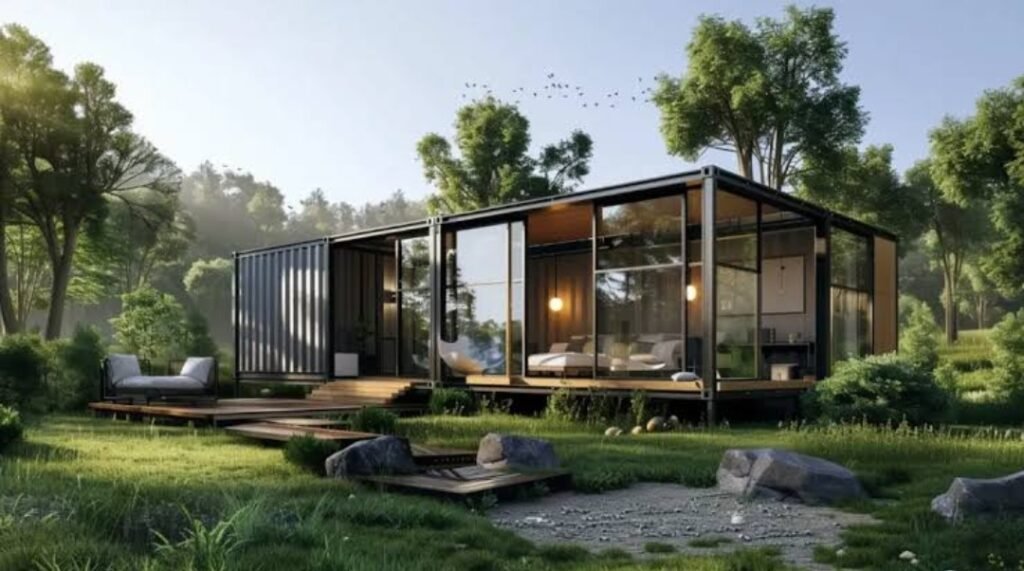Introduction
In recent years, shipping container buildings have emerged as a popular choice for commercial and residential projects due to their cost-effectiveness and sustainability. However, a common concern among potential adopters is the safety of these structures. Can these converted metal boxes provide the security and comfort required for modern habitation? This article delves into critical aspects to demonstrate how shipping containers can be safely transformed into habitable spaces. Equipped with the proper modifications and precautions, these structures hold immense potential for addressing various urban challenges. As we explore their safety features, remember that shipping container buildings represent an innovative step forward in the architectural landscape.
Structural Integrity and Durability
Shipping container buildings are renowned for their robustness and resilience, primarily because they are engineered to transport goods across vast oceans. Their unrivaled structural integrity stems from their corrugated steel construction, which enables them to bear heavy loads and endure extreme weather conditions. This makes them ideal candidates for diverse building projects. With minimal spatial requirements, they can be stacked up to several stories high while preserving their inherent strength, providing a sturdy framework for innovative architectural designs.
The unwavering construction of these containers renders them resistant to seismic and wind events, safeguarding against natural disasters and preserving structural continuity. Their capabilities have been assessed in various scenarios, from barracks to emergency shelters, confirming their reliability. Using such containers for building structures fosters an intrinsic security that many traditional building materials do not offer, ensuring occupant safety under various conditions and contributing to their growing popularity across the globe.
Insulation and Temperature Control
If refitted adequately, shipping containers can achieve superior insulation and temperature control. The steel construction—while remarkably robust—is also a heat conductor, leading to interior temperature regulation challenges. Without proper modifications, shipping container buildings might quickly become hot in the summer and cold in the winter, making them uncomfortable for inhabitants. Adequate insulation is, therefore, essential to maintain a stable internal environment.
Several insulation methods, including rigid, spray, and eco-friendly materials, can line the interior, optimizing energy efficiency and atmospheric comfort. These solutions can effectively mitigate condensation issues, ensuring containers remain dry and hospitable. Coupled with adequate ventilation systems, the air quality within container structures can be significantly improved, offering a healthier living or working environment that rivals traditional constructions. Effective insulation combats potential temperature extremes, allowing for a comfortable and sustainable existence within these innovative structures.
Modifications for Safety
Particular structural modifications are necessary to convert a shipping container safely into a suitable living space. Windows and doors must be skillfully cut and reinforced to preserve the container’s inherent strength. Additionally, reinforcing multi-level buildings with additional supports ensures stability and reduces the risk of structural compromise. Adherence to local building codes is paramount to ensure the safety of inhabitants.
Employing experienced professionals for these modifications assures that the transformations adhere to industry standards in craftsmanship and material quality. By investing in thorough planning and reliable construction processes, the shipping container’s integrity can be maintained, enhancing its durability and the safety of those who occupy it. Mechanical upgrades complement the solid construction of container buildings, facilitating secure and long-lasting environments.
Fire and Weather Resistance
Due to their steel composition, shipping container buildings naturally have some fire resistance. However, enhancing their fire safety is crucial for residential and commercial uses. Incorporating fire-resistant insulation materials, installing certified fire-rated walls, and integrating smoke detectors and sprinkler systems are effective measures to bolster fire safety and prepare for any potential fire-related emergency.
Moreover, shipping containers are inherently watertight and weather-resistant, making them advantageous against moisture ingress and corrosion. Sealing seams effectively and applying high-quality paints or protective coatings can further prevent rust and prolong the container’s lifespan, maintaining resistance against harsh weather conditions. Such enhancements ensure these unique structures remain resilient and secure against diverse environmental challenges, offering peace of mind to all inhabitants.
Health and Environmental Considerations
Ensuring the health and safety of occupants is a primary concern in container living, and careful consideration of materials and practices plays an essential role in this regard. Selecting non-toxic and environmentally friendly materials for modifications and interior finishes helps maintain healthy indoor air quality and minimizes exposure to air pollutants.
Reusing shipping containers in construction represents a significant environmental benefit, as it aids in reducing waste and lessening the carbon footprint. By integrating renewable energy sources—such as solar panels and energy-efficient appliances—and embracing sustainable design principles, shipping container buildings can foster an eco-conscious lifestyle that contributes to environmental preservation. Emphasizing sustainability in every aspect of container construction helps create a harmony between modern living and ecological responsibility.
Conclusion
Shipping container buildings present a unique amalgamation of sustainability, durability, and affordability, making them an enticing option for modern living and workspaces. While attention to specific areas, such as insulation, structural modifications, and fire safety, is required, these considerations can be managed effectively through expert planning and execution. When designed and constructed thoughtfully, shipping container homes can offer safe and secure environments that correspond with contemporary environmental standards and architectural innovation.
Embarking on container construction fosters creativity and resourcefulness, addressing contemporary challenges such as urban housing shortages, sustainability, and cost efficiency. As we continue to adapt these structures to suit diverse needs, we pave new avenues toward a more sustainable future and redefine what it means to build responsibly. Embracing this innovative approach to architecture encourages a renewed understanding of our impact on the planet and promotes sustainable practices that resonate far beyond the walls of shipping container buildings.
